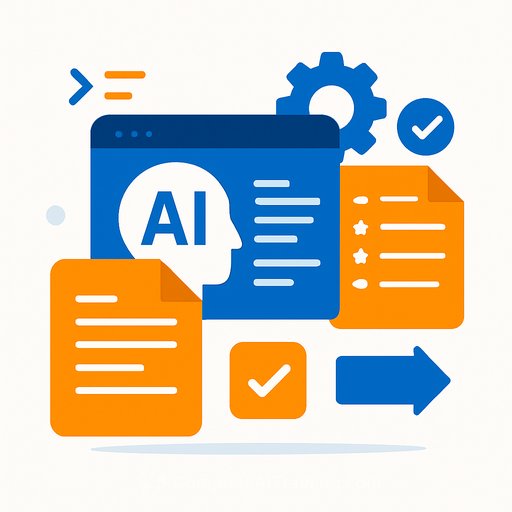AWS open-sources Agent SOPs: structured workflows for AI agents without writing piles of code
AWS is releasing Agent SOPs, a markdown-based format that gives AI agents clear, structured instructions using standard language and RFC 2119 keywords like "MUST," "SHOULD," and "MAY." The goal is simple: reduce unpredictable behavior from model-driven agents and make them easier to deploy and maintain at scale.
Instead of relying on an LLM to invent a workflow on the fly, SOPs act like a scaffold. Developers define the steps, inputs, and guardrails in plain language, and the agent executes within those constraints.
Why AWS moved beyond model-driven agents
- Unpredictable production outcomes: agents produced inconsistent results and misinterpreted instructions.
- High maintenance: heavy prompt engineering made iteration slow and brittle.
- Scale blockers: the lack of structure made enterprise rollout harder than expected.
These issues surfaced during AWS's internal use of its own Strands Agents SDK. Agent SOPs are the response: keep the flexibility of LLMs but bind them to a clear process.
What Agent SOPs are (and how they work)
Agent SOPs are standardized, natural language instructions written in markdown. They use RFC 2119 keywords to set hard rules vs. recommendations, which gives the agent a hierarchy of constraints and options.
Because the format is model-agnostic, SOPs work across LLMs, vibe coding platforms, and agent frameworks. AWS notes that Strands can embed SOPs as system prompts, tools like Kiro and Cursor can use them to run structured workflows, and models like Claude and GPT-4 can execute them directly.
Core pieces of an effective SOP
- Goal: the single outcome the agent MUST achieve.
- Inputs and parameters: what the agent MAY read or MUST accept.
- Constraints: MUST/SHOULD/MAY rules that limit scope, tools, and data access.
- Procedure: ordered steps the agent SHOULD follow, with decision points.
- Validation: checks the agent MUST perform before returning output.
- Output spec: exact format the result MUST use.
- Escalation/stop rules: when the agent MUST halt or request help.
SOPs can be chained to drive multi-phase workflows. For example: triage → analysis → action → verification.
Where SOPs fit in your stack
- Agent frameworks: embed SOPs as system prompts (e.g., Strands).
- Dev tools: use in Kiro or Cursor for consistent, repeatable LLM workflows.
- Direct execution: run with Claude or GPT-4 without extra glue code.
What AWS teams used SOPs for
- Code reviews with explicit safety and style checks.
- Documentation generation from code or tickets with strict output formats.
- Incident response playbooks with guardrails and verification steps.
- System monitoring summaries that MUST include specific metrics and thresholds.
Getting started (quick checklist)
- Pick a workflow you repeat weekly: code review, PR triage, incident runbook, or change summary.
- Write the Goal in one sentence. If it's vague, split the workflow into smaller chained SOPs.
- List inputs and tools. Mark what the agent MUST use vs. MAY use.
- Define steps and validation. Include at least one MUST-level verification before completion.
- Specify the exact output format. Aim for a schema the agent can't ignore.
- Test across two models. Note differences, tighten constraints, and retest.
- Add logging and result sampling. Track failure modes and update the SOP, not the prompt.
Pitfalls to avoid
- Vague goals: if the goal is fuzzy, the agent will be too. Be literal.
- Missing validation: always include MUST-level checks before returning results.
- Unbounded tool use: restrict tools and data scopes with explicit rules.
- No versioning: treat SOPs like code. Version them and review changes.
- Compliance gaps: add logging requirements and redaction rules directly in the SOP.
When you should still write code
- Hard real-time or strict latency targets.
- Regulated outputs that require deterministic logic and audits beyond agent logs.
- Complex multi-system transactions where retries and idempotency MUST be guaranteed in code.
Why this matters for engineering teams
SOPs shift the work from prompt tinkering to process design. That means fewer production surprises, cleaner onboarding, and workflows you can review in a pull request like any other spec.
The net effect: faster iteration with more predictable outcomes, without committing to a single model or framework.
Resources
Your membership also unlocks:






